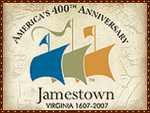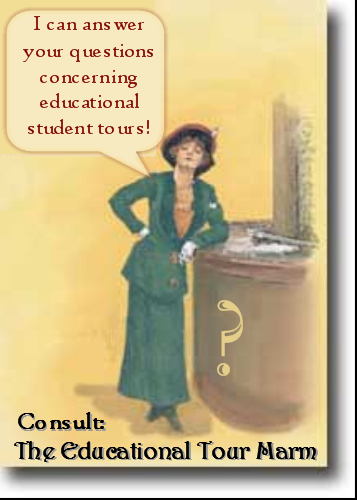Wordless Wednesday #2 - Answer
.
In 1801 Charles Willson Peale formed the first scientific expedition in American history when he supervised the excavation of the remains of a mastodon from a farm in upper New York State. Bringing the bones back to his museum, he restored them and then reassembled the skeleton. Exhuming the Mastodon 1801, one of the very first American genre paintings, represents the record of the exhumation. Peale painted it between 1806 and 1808 and portrayed himself as the one holding the sketch of a mastodon bone. This painting contains 75 figures and shows the great wheel used to lift the water from the marl pit where the bones were embedded, the plank room, and the army tent where the excavators slept. A sketch by his son (above), Titian Ramsey, shows the completed skeleton.
The Artist in His Museum (1822) shows him lifting a curtain to reveal his museum. A partial jaw and a large mastodon bone can be seen on the bottom right propped up against the green table cloth as well as a peek of the mastodon behind the curtain. An artist's palette sits on top of the table.
Peale had already established a museum in Philadelphia, which was known as Peale’s Museum, and was eventually moved to the second floor of Independence Hall. This museum contained portraits of famous Americans, a number of Native American relics, wax dummies, as well as specimens of natural history. He invented his own type of taxidermy and was the first to present animals in a natural setting. Additionally he created background paintings in dioramas to depict habitat; his mastery of trompe d'oeil gave a three dimensional quality to the scene. Charles Willson Peale was a century ahead of his time.
The Artist in His Museum (1822) shows him lifting a curtain to reveal his museum. A partial jaw and a large mastodon bone can be seen on the bottom right propped up against the green table cloth as well as a peek of the mastodon behind the curtain. An artist's palette sits on top of the table.
Peale had already established a museum in Philadelphia, which was known as Peale’s Museum, and was eventually moved to the second floor of Independence Hall. This museum contained portraits of famous Americans, a number of Native American relics, wax dummies, as well as specimens of natural history. He invented his own type of taxidermy and was the first to present animals in a natural setting. Additionally he created background paintings in dioramas to depict habitat; his mastery of trompe d'oeil gave a three dimensional quality to the scene. Charles Willson Peale was a century ahead of his time.
.
Charles Willson Peale was born in Chester, Queen Anne’s County Maryland April 15, 1741 to Charles Peale and his wife Margaret. His father was called an adventurer who was transported to the colonies from England for forgery and embezzlement. Peale's father died when he was nine years old leaving him, his brother James, and their mother in dire financial straits. At this tender age, Peale became the head of his family trying to take care of both his younger brother and mother by entering into a series of opportunities to make money.
Charles Willson Peale was born in Chester, Queen Anne’s County Maryland April 15, 1741 to Charles Peale and his wife Margaret. His father was called an adventurer who was transported to the colonies from England for forgery and embezzlement. Peale's father died when he was nine years old leaving him, his brother James, and their mother in dire financial straits. At this tender age, Peale became the head of his family trying to take care of both his younger brother and mother by entering into a series of opportunities to make money.
.
At the age of 13 Peale was apprenticed to a saddler (a wholley unhappy experience). He eventually learned watchmaking and by the time he was 21 and married, added clockmaking and upholstery to his repertoire. He was to maintain an enduring and active interest in all things artistic and scientific. In short, Peale was a true son of the Age of Enlightenment and was fascinated by the world around him, seeking ways to understand and improve her.
.
It was around the time of his marriage that he became interested in painting through a local amateur artist, Gustave Hessalius. He was forced to flee to Boston because of debts and ended up living with America's most famous portrait artist, John Singleton Copley. In 1766 some wealthy benefactors raised eighty-three pounds to send him to London to study with Benjamin West. He stayed in London for three years returning to Annapolis. In 1772 he painted the first portrait ever of George Washington (above) who was then a Colonel of the Virginia Militia. He was to paint 60 more portraits of Washington.
.
Peale's family was growing; he was to have a total of 17 children (all named for famous artists and taught how to paint), by three wives, being widowed twice. His reputation as an artist brought enough money to warrant a business move to America's largest city, Philadelphia. Since he was an ardent Whig and radical, he became close friends with most of the founding fathers, and painted many of them. He and his brother both served in the Continental Army under Washington with distinction in Trenton and Princeton.
.
He became more involved in government (served on several committees in Philadelphia and in the Philadelphia General Assembly), science, invention, and the diffusion of knowledge as he grew older. Peale developed a level of expertise in fields such as carpentry, dentistry, optometry, and shoemaking. He wrote several books on various subjects including engineering, hygiene, penmanship, and domestic happiness. He had several patents to his name and had even invented a rude motion picture technique. One invention, in particular, can still be seen at Monticello, home of Thomas Jefferson: a polygraph used to make copies of letters. He also sketched several of the specimens (see horned lizard above) brought back by Lewis and Clark.
.
In 1795 he established the Columbianum, America's first public exhibition of both modern paintings and Old Masters. Out of this he organized the Pennsylvania Academy of the Fine Arts, which received its charter in 1806 and which stands today as the oldest art school in America.
.
Peale was the consummate patriarch and the Peale home was a large and happy one as well as serving as a self-contained school. Several generations of the Peale family (including women) became artists and others became politicians. The family members (and extended members) are all well-documented with Peales painting Peales!
.
He died in Philadelphia on February 22, 1827 and is buried in St. Peter's Episcopal Churchyard.
.
After his death, his museum was sold to, and split by, showman P.T. Barnum and Moses Kimball
then sold to France, and now rests at Hessisches Landesmuseum in Darmstadt, Germany.
.
In 2006, Peale's full length portrait of George Washington at Princeton brought 21.3 million at auction.
Further study:
Reading List:
American Monster by Paul Semonim
For students:
The Great Unknown by Taylor Morrison
Music:
Kew. Rhone. by John Greaves & Peter Blegvad
Seven Scenes from the Painting "Exhuming the First American Mastodon"




















2 comments:
Well at least I was close. I never would have guessed the artist was also the leader of the expedition.
He was an amazing man and as intelligent as Benjamin Franklin!
Post a Comment